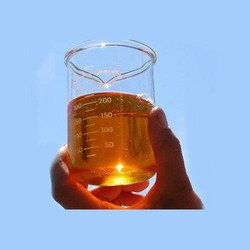GOING GREEN: How to make biodiesel
HOW TO MAKE BIODIESEL
Hey guys so today I decided to do a little science, and today we'll be talking about a form or renewable energy, biofuels to be exact. I'll be giving a step by step guide to the production of biodiesel.
WHAT IS RENEWABLE ENERGY
Renewable energy can simply be defined as energy produced from renewable sources, that is to say sources which replenish them self in a period of time that renders it continously applicable over a long period of time. Some examples of renewable energy are solar power, geothermal heat, wind, hydroelectric power, biofuels etc. For the purpose of this post, biofuels are what shall be considered
WHAT ARE BIOFUELS

Source
Biofuels are renewable forms of energy which are produced from biological processes such as anaerobic respiration, fermentation etc. Unlike fossil fuels which take hundreds of years to form, biofuels take anything from minutes to a few days to produce. They are also biodegradable and have no harmful effects on the environment. Some examples of biofuels are bioethanol, biodiesel and biogas.
WHAT IS BIODIESEL
Biodiesel can simply be defined as a biofuel substitute for petrodiesel produced from the esterification of vegetable oils or animal fats. The resulting esters possess similar characteristics to petrodiesel and as such can be used in its place.
SMALL SCALE PRODUCTION OF BIODIESEL
The following raw materials are required for the production of biodiesel
- Plant Oils/animal fat
- Ethanol
- Sodium/Potassium Hydroxide
- Water
Note: Every raw material stated here can be sourced for locally. For the sake of this post, the oil that will be considered is palm oil, seeing as its the most relatively abundant feedstock oil in Nigeria. Ethanol can be acquired from the fermentation of cassava starch or sugar cane and sodium/potassium hydroxide can be obtained from the mixture of burnt palm fronts and water. Finally, water used should be distilled.
The following equipment are required
- A measuring cylinder
- Beaker
- Bunsen burner(heat source)
- Stirrer
- Weighing balance
- Spatula
Note: All equipment here can be replaced with household items provided that a definite volume of each raw material is used with respect to the ratios that are given in the procedure.
PROCEDURE FOR PRODUCING 1LTR OF PALM OIL BASED BIODIESEL
- Use the spoon and weighing balance and measure out 80g of sodium hydroxide
- Mix the sodium hydroxide in a container(beaker) with 3ltrs of ethanol
- Shake and stir until the sodium hydroxide pellets have completely dissolved in the ethanol: thus forming sodium ethoxide
- Preheat 1ltr of palm oil till its about 60°c
- Pour the preheated palm oil into the sodium ethoxide container
- Shake and stir the mixture until the colour deepens and the two distinct layers of palm oil and sodium ethoxide are now one
- Allow the biodiesel to sit for 24hrs so that the glycerol can settle at the bottom.
- Decant the biodiesel into a separate and larger container
- Wash the biodiesel by pouring water thats about 3times the amount of biodiesel that's produced.
- Let it stand for 24-48hrs
- The biodiesel will settle at the top, while the water and dissolved particles will settle at the bottom.
- Decant the biodiesel and its ready for use.
Note: The amount of biodiesel produced will be equivalent to the amount of Palmitic acid present in the palm oil and it will be less than the amount of palm oil used.
Finally, the biodiesel may be ready for use, but biodiesel begins to turn to gelly at lower temperatures and as such specialized chemicals should be added to keep it in liquid phase. The carborator, fuel pump and filter of the engine will need changing to specialized ones for biodiesel use, but rest assured they will also work with normal diesel as well.
BIODIESEL BLENDING
Using 100% biodiesel isn't very feasible right now, its possible but not very practical seeing as diesel itself is still in high demand, but biodiesel and actual diesel can be blended together using a system called the B factor.
Simply put, if you're using 100% biodiesel then it is referred to as B100, a blend of 5% biodiesel and 95% petrodiesel is referred to as B5 and so on and so forth. Most countries that have embraced the production and use of biodiesel use the B factor system. It should be stated that provided you're using a blend of B20 and lower, no modifications or at most minor modifications are required to your engine.
That's it for today guys, so if you liked it then please
Upvote
Comment
Resteem
This is coming to you from @stach's very own @francistagbo


Congratulations! This post has been upvoted from the communal account, @minnowsupport, by francistagbo from the Minnow Support Project. It's a witness project run by aggroed, ausbitbank, teamsteem, theprophet0, someguy123, neoxian, followbtcnews, and netuoso. The goal is to help Steemit grow by supporting Minnows. Please find us at the Peace, Abundance, and Liberty Network (PALnet) Discord Channel. It's a completely public and open space to all members of the Steemit community who voluntarily choose to be there.
If you would like to delegate to the Minnow Support Project you can do so by clicking on the following links: 50SP, 100SP, 250SP, 500SP, 1000SP, 5000SP.
Be sure to leave at least 50SP undelegated on your account.
You should use the steemng and steemstem tag.... I've learnt something new today, come let's open our own biodiesel plant na